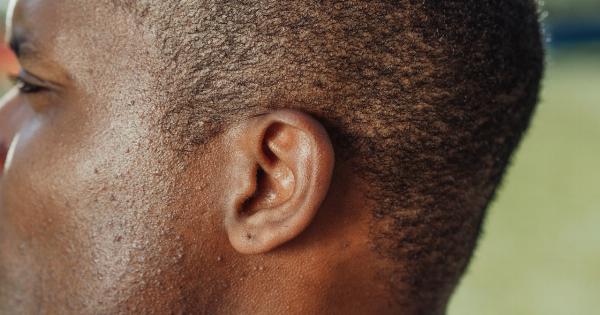A cochlear implant is a medical device that can provide hearing to individuals who have severe to profound hearing loss.
Unlike hearing aids, which amplify sound, cochlear implants bypass the damaged or non-functioning parts of the ear and directly stimulate the auditory nerve. This allows the brain to perceive sound, enabling individuals to better understand speech and other sounds.
How Does a Cochlear Implant Work?
A cochlear implant consists of two parts: an external component and an internal component. The external component, which is worn behind the ear, captures sound and processes it into digital signals.
These signals are then sent to the internal component, which is surgically placed under the skin behind the ear. The internal component further converts the signals into electrical impulses that are delivered to the auditory nerve.
Benefits of Cochlear Implants
Cochlear implants can provide numerous benefits for children with severe to profound hearing loss:.
- Improved Speech Perception: Cochlear implants can significantly improve a child’s ability to understand speech, especially in noisy environments. They can help children develop language and communication skills, allowing them to thrive academically and socially.
- Enhanced Sound Awareness: With a cochlear implant, children can gain awareness of environmental sounds, such as sirens, alarms, and nature sounds, enhancing their safety and quality of life.
- Better Music Appreciation: While cochlear implants do not fully restore natural hearing, they enable individuals to appreciate music and enjoy the nuances of melodies, rhythms, and lyrics.
- Increased Independence: By improving their ability to communicate effectively, cochlear implants empower children to navigate the world more independently.
Is a Cochlear Implant Right for Your Child?
While cochlear implants offer significant benefits, the decision of whether or not to implant your child should be made based on various factors:.
- Hearing Evaluation: A comprehensive hearing evaluation conducted by an audiologist can help determine the severity of your child’s hearing loss and assess their potential candidacy for a cochlear implant.
- Age: Cochlear implants are most effective when implanted at an early age. Research has shown that children who receive cochlear implants before the age of two tend to achieve better speech and language outcomes than those implanted later.
- Communication Needs: Consider your child’s communication needs and goals. If your child struggles with conventional hearing aids and has limited speech perception, a cochlear implant may be a suitable option.
- Health Considerations: Your child’s overall health and ability to undergo surgery play a crucial role in the decision-making process. It is important to consult with medical professionals to evaluate any potential risks and benefits.
- Family Support: The success of cochlear implant therapy relies on consistent support and follow-up care. Parents and caregivers must be willing to commit to ongoing therapy sessions, rehabilitation, and device maintenance.
The Cochlear Implant Process
If you decide that a cochlear implant is the right choice for your child, here are the general steps involved in the process:.
- Referral and Evaluation: Your child will be referred to a specialized cochlear implant center, where they will undergo a comprehensive evaluation, including hearing tests, speech-language assessments, and medical examinations.
- Medical Clearance: Once your child is deemed a cochlear implant candidate, they will require medical clearance from an ear, nose, and throat (ENT) specialist to ensure they are fit for surgery.
- Surgery: The cochlear implant surgery typically takes 2-4 hours and is performed under general anesthesia. The surgeon will place the internal component of the implant into the cochlea, and the incision site will be closed.
- Activation and Programming: After a few weeks of healing, the external component of the cochlear implant will be activated by an audiologist. The audiologist will adjust and fine-tune the device settings to maximize your child’s hearing experience.
- Habilitation and Rehabilitation: Following activation, your child will begin a rehabilitation program aimed at helping them adapt to the cochlear implant and develop listening, speech, and language skills.
- Follow-up Care: Regular follow-up visits with the audiologist, speech-language pathologist, and ENT specialist are crucial to monitor your child’s progress, make any necessary adjustments, and ensure the optimal functioning of the cochlear implant.
Potential Risks and Considerations
While cochlear implants are generally safe and well-tolerated, there are some risks and considerations to be aware of:.
- Surgical Risks: As with any surgery, there are risks associated with anesthesia, infection, damage to the facial nerve, and cerebrospinal fluid leakage. However, these complications are rare.
- Hearing Outcomes: While cochlear implants can significantly improve speech perception, the outcomes vary for each individual. Factors such as age at implantation, duration of deafness, and post-implant rehabilitation contribute to the overall success.
- Device Limitations: While cochlear implants provide auditory input, they may not fully restore natural hearing. Individuals with cochlear implants may still encounter difficulties with speech discrimination in certain situations, such as in very noisy environments.
- Commitment to Therapy: Cochlear implant therapy requires a significant commitment from both the child and their family. Regular therapy, follow-up visits, and device maintenance are essential for optimal outcomes.
Conclusion
Deciding whether your child should receive a cochlear implant is a complex and deeply personal decision.
It is crucial to gather all the necessary information, consult with medical professionals, and consider your child’s unique needs and circumstances. While cochlear implants can provide remarkable benefits, they also require long-term commitment and support. Ultimately, the goal is to choose the best path forward for your child’s communication, development, and overall well-being.




























